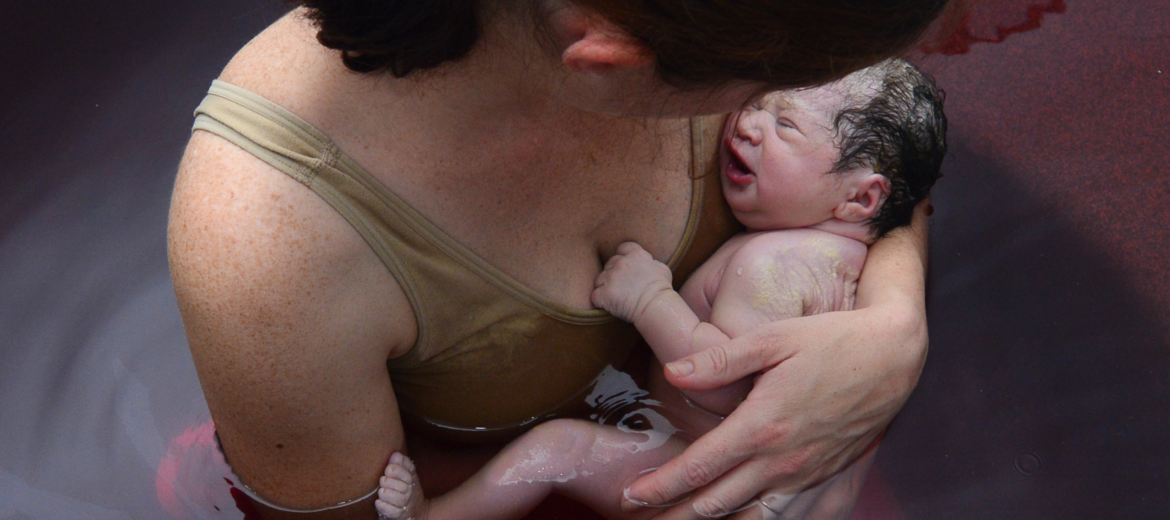When first-time mother Gunjan Chopra was in labour, she couldn’t have imagined she would have a waterbirth in India. Her gynecologist suggested stepping into a birth pool and laying there for a while to ease her pain, but Gunjan hesitated. “At that point, I felt nothing would reduce the excruciating pain I felt,” she later said.
Skeptical about the benefits of a waterbirth in India, she gingerly stepped into the birth pool in the position advised by Gill Perks, Consultant Midwife, NHS UK.
What is waterbirth delivery?
“Water birth is a process wherein the mother labours in temperature-controlled water and, thereafter, delivers her baby within the water pool in the presence of medical professionals. Not only does the warm water feel nice during labour, but it also has a positive impact on the birthing experience as a whole,” says Gill.
The act of labour is a highly intense activity, wherein the mother’s body is under extreme physical duress. The use of warm water during labour is not only approved by the NICE guidelines but is also known to be a naturally calming technique.
Ask Gunjan and she echoes these thoughts, “The water relaxed me. The temperature of the water was soothing..it felt therapeutic. “
Is waterbirth available in India?
Yes! We offer the facilities of waterbirthing at Sitaram Bhartia Hospital in South Delhi. Apart from us, around three other hospitals have provisions for the same in Delhi NCR.
Depending on where you live, you can visit the following places for a water birth in India:
Water birth in Chennai
In Chennai, water births are offered at Bloom Fertility and Healthcare.
Water birth in Kochi
Birth Village offers the option of delivering in water in Kochi.
Water birth in Bangalore is offered at Alfa Clinic.
Water birth in Hyderabad
Fernandez Hospital and Healthy Mother/The Sanctum provide this option for the comfort of to-be mothers.
Water birth in Goa is offered at The Birthing Sanctuary, run by a midwife and hypnobirthing specialist.
Why do people choose water birth?
Expecting women may opt to labour in water as the temperature of the water can relieve pain. When women are in the water, they feel comfortable and as a result, produce less adrenaline. The low levels of adrenaline stimulate the production of oxytocin and endorphins (the ‘feel-good’ hormones) and help the mother to feel less pain, become quieter and focus on her baby.
Benefits of Waterbirth
A water birth or labouring in water is beneficial not just for the mother, but for the baby as well.
- It acts as natural pain relief for the mother
- The sense of weightlessness in water is comforting
- Women also tend to feel private and safe in the water
- It shortens the duration of labour, according to studies
Water birth is also a more gentle form of birth for the baby. The baby is delivered from the warmth of the mother’s womb into a simulated environment, which is the water pool.
Water Birth Risks – Are water births dangerous?
According to a joint statement made by the RCOG (Royal College of Obstetricians and Gynecologists) and RCOM (Royal College of Midwives), the use of warm water is now encouraged during labour.
Evidence, in fact, shows that water birth is safe and women labouring in water:
- Report higher levels of satisfaction and comfort
- Are less likely to need medical interventions
- Are more likely to opt for a normal birth
Can All Pregnant Women Opt for Waterbirth?
At our hospital, we offer the option of labouring in water in specific circumstances.
Women who labour in water are usually low-risk mothers. For them,
- Labour should have started on its own
- They should have a single baby in the correct head-down position
- There should be no known complications
- There should be no signs of fetal distress
If there are changes in the way labour is progressing, women may be advised against labouring in water.
It is not recommended for women with certain medical conditions to labour in water. Some of these are:
- High BP during pregnancy
- Diabetes during pregnancy
- Epileptic fits
- Preterm labour
Is a waterbirth more expensive?
At Sitaram Bhartia, the charges for a waterbirth are applied in addition to your existing delivery charges.
Preparing For The Water Birth Experience
Couples are usually informed of the option of a waterbirth in their antenatal consultations provided there are no complications in their pregnancy.
“I had endured about 10 hours of labour with my husband and a nurse by my side. They were constantly making me exercise, regularly monitoring my baby’s heartbeat and keeping me hydrated. When I dilated around 6 cms, the nurses helped me position myself to enter the birth pool,” recalls Gunjan.
One of the common questions women ask is around what to wear for a waterbirth since they may stay underwater for long periods of time.
You should carry either a bikini or a sports top/bra and big, soft towels.
“You will be assisted by nurses and gynecologists who are trained in handling waterbirths. Your husband or birthing partner will also be allowed to hold or comfort you all this while.”
You may be encouraged to come out of the pool from time-to-time to increase mobility, or even to visit the bathroom and empty your bladder.
What happens during a water birth in India?
A normal water birthing experience can vary and will not be the same for every mother. The standard process, however, starts when labour pains become more intense and the mother is in active labour. After this, the mother is asked to get into the water pool.
Once in the water pool, the mother can adopt any position that she finds most comfortable. The temperature of the water is monitored carefully and customized according to the mother’s needs. The mother’s temperature is checked periodically, and the baby’s health is also observed using waterproof equipment.
If labour pains peak and become impossible to handle, pain-relief in the form of Entonox gas can also be offered.
It is possible that the mother neglects her nutrition and hydration a little when she is in the pool. This is why she will be asked to take in small quantities of soft fruit, curd, etc. Partners can also play an active role here by making sure nutrition and hydration stays consistent throughout, as the labouring body is working especially hard.
“We encourage the partner to think about the little things such as putting a cold towel on their wife’s face, applying some vaseline on her lips, massaging her shoulders and encouraging her to relax in between contractions,” counsels Gill.
“When the birth is imminent, we encourage mothers to be on their knees. At this point in time, some mothers ask to come out of the pool while some prefer to stay in.”
“I was told to do whatever my instincts told me to do. A few pushes and cries later, my baby was born. My husband said he swam out!” says Gunjan, laughing.
Once the baby is born, he/she is gently pushed and lifted up to the mother’s chest. They are allowed some time to stay in the warm water together in order to settle themselves and recover. Once ready, they are helped out of the pool, dried off and warmed up, and carried over to a clean, cosy bed.
We encourage initiation of breastfeeding at birth to ensure the baby receives the mother’s first milk, and both mother and baby begin bonding immediately.
This blog post has been written with editorial inputs from Dr. Anita Sabherwal Anand, Senior Obstetrician-Gynecologist at Sitaram Bhartia in South Delhi.

Dr. Anita Sabherwal Anand
Experience: 24+ years
MBBS, MD, DNB Obstetrics & Gynecology
Do you still have questions regarding your condition?
Please call on +91 9871001458 to schedule a consultation.


